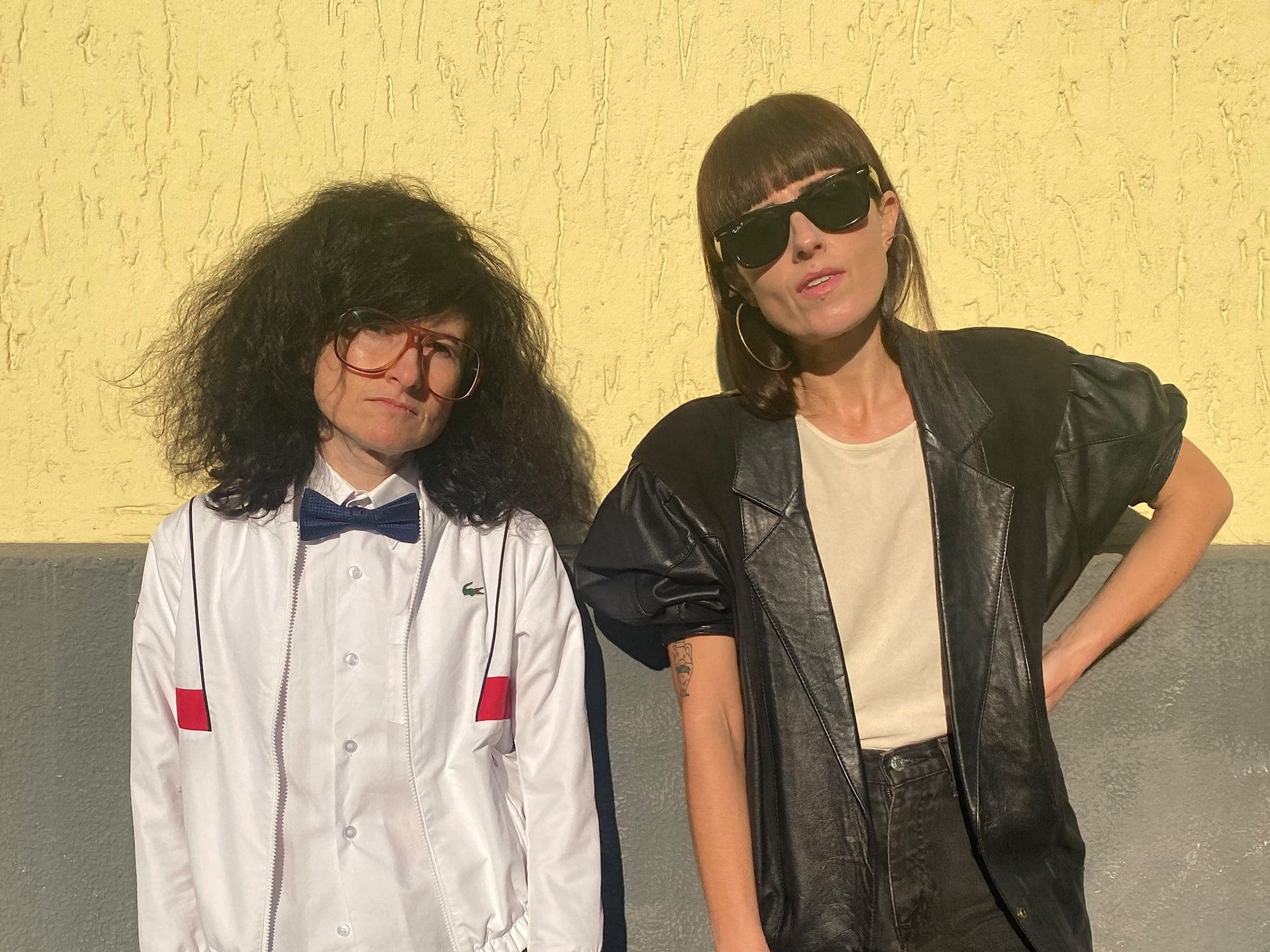
Material curiosities: Primavera 2025
In its 34th year, Primavera—the Museum of Contemporary Art Australia’s annual survey of Australian artists 35 and under—might be about to age out of itself, but with age it seems, comes wisdom and perspective.
Soda Jerk are premiering their first video work in four years: Hello Dankness at Samstag Museum of Art in Adelaide. It’s a follow-up to their political fable Terror Nullius of 2018, which almost became overshadowed by its label of ‘un-Australian’ by its own funders. While this new work is deeply indebted to the trolling tonality of internet culture, it’s also very much rooted in cinema. It brings together Greek tragedy, stoner films and Broadway musicals to ruminate on the 2016 and 2020 United States elections—and the world we’ve lived through during the past six years.
For two decades, Soda Jerk have delved into cinematic history to create virtuosic works of sampling. They trawl through countless hours of film and television history to break our understanding of the formation of popular culture. “There’s an incredible amount of waste built into the way that we work,” they explain. “Rampant variations of the same narrative and endless scenes and characters that never make the cut.” The siblings have worked as a duo since the beginning.

Hello Dankness has been a monumental labour. After being commissioned in 2018 by Samstag, Soda Jerk set out to make a film responding to the Trump era, originally to premiere in October 2020: a month before the US elections. We all know what happened that year—Covid-19. “We almost had the narrative locked down in early 2020.” October passed, former US president Trump lost, the world got weirder— and we’re still coming to grips with it.
In the two intervening years they have centred on expanding their initial idea, all while an unreal reality unfurled around us in real-time: massive civil rights uprising through Black Lives Matter, a pandemic, QAnon conspiracy theories, the January 6 Capitol riots, the war in Ukraine, catastrophic climate disasters. Despite his ousting, the eeriness of Trump remained in his presidential absence, and the world has descended even further into a dystopic era.
Hello Dankness responds to this world. Screening each day at 3:30pm, it’s part of a broader survey exhibition Open Sauce, which alongside Terror Nullius will also feature The Was, 2016, and The Time that Remains, 2012.
Readers familiar with Soda Jerk through Terror Nullius will find connections between the film and Hello Dankness, insofar as they’re both political fables—although while Terror Nullius begins in 1975 and covers several decades of Australian history, Hello Dankness is a bent suburban musical that squeezes out our recent social and political horrors.
Seeing these alongside The Was and The Time That Remains draws out a significant political world view that has driven their practice from the beginning. “Our work has always been rooted in politics,” they tell me, even before their films explicitly included politicians as characters. “The challenge our practice poses to intellectual property law has always been the OG [original, authentic] driving force for the way we work. And our very first work, which was also our first feature film, Hollywood Burn [2006], was an anti-copyright, sci-fi, biblical epic that pitted Elvis Presley and a league of intergalactic video pirates against Moses and his ‘Copyright Commandments’.”

Soda Jerk were borne of a resistance to cultural privatisation, one of the controls of our cultural landscape. They have been strategic in what they call the “seizing [of] privatised resources and politically appropriating them”. They are indebted to the early 2000s “freak positive” scene of the Sydney queer community. During a fraught time where gentrification was looming, there were illegal warehouse parties, the Sydney Broadway squats, healthy remix practices in hip-hop, and the now-defunct Electrofringe—all driven by communities that embrace civil disobedience.
This all infiltrates the work. The Was is a psychedelic reframing of film and television culture of the 1980s and 1990s, made in collaboration with other virtuosic samplers, the music group The Avalanches. References in separate film worlds collide. Meanwhile The Time that Remains forms part of a series where actors meet alternative versions of themselves across the time and space of different films. In both, it’s as if the dream worlds of Hollywood are broken open and the real world streams in. “We’ve always thought of fiction films as documentaries,” they say, “in the sense that they are historical documentary that are encrypted with the histories, experiences and politics of the eras in which they were made.”
If one were to track why their films have grown from allegorical psychedelic trips to explicit political fables, it’s because we’re in even more fraught political times than the beginning of the 21st century. We’re in an era where people believe Oprah and Barack Obama eat babies, or the conspiracy that a US furniture company hides sex-trafficked children inside their closets (which explains why the furniture is so expensive). Soda Jerk are interested in the narratives created across the political spectrum at a time of such upheaval, including the astronomical increase in people tracking movements of the moon and stars, transposing the symbolism onto our personalities and lives.
“The moment that Kendall Jenner hands that Pepsi can to the cop, we pass some kind of cringe horizon from which we cannot return,” they say, referring to the strange political epoch we find ourselves in, with an ad featuring Jenner giving a soft drink to a police officer at a protest. Soda Jerk are just trying to make sense of it all, like the rest of us.
Open Sauce
Soda Jerk
Samstag Museum of Art (Adelaide SA)
18 October—16 December
This article was originally published in the November/December 2022 print edition of Art Guide Australia.